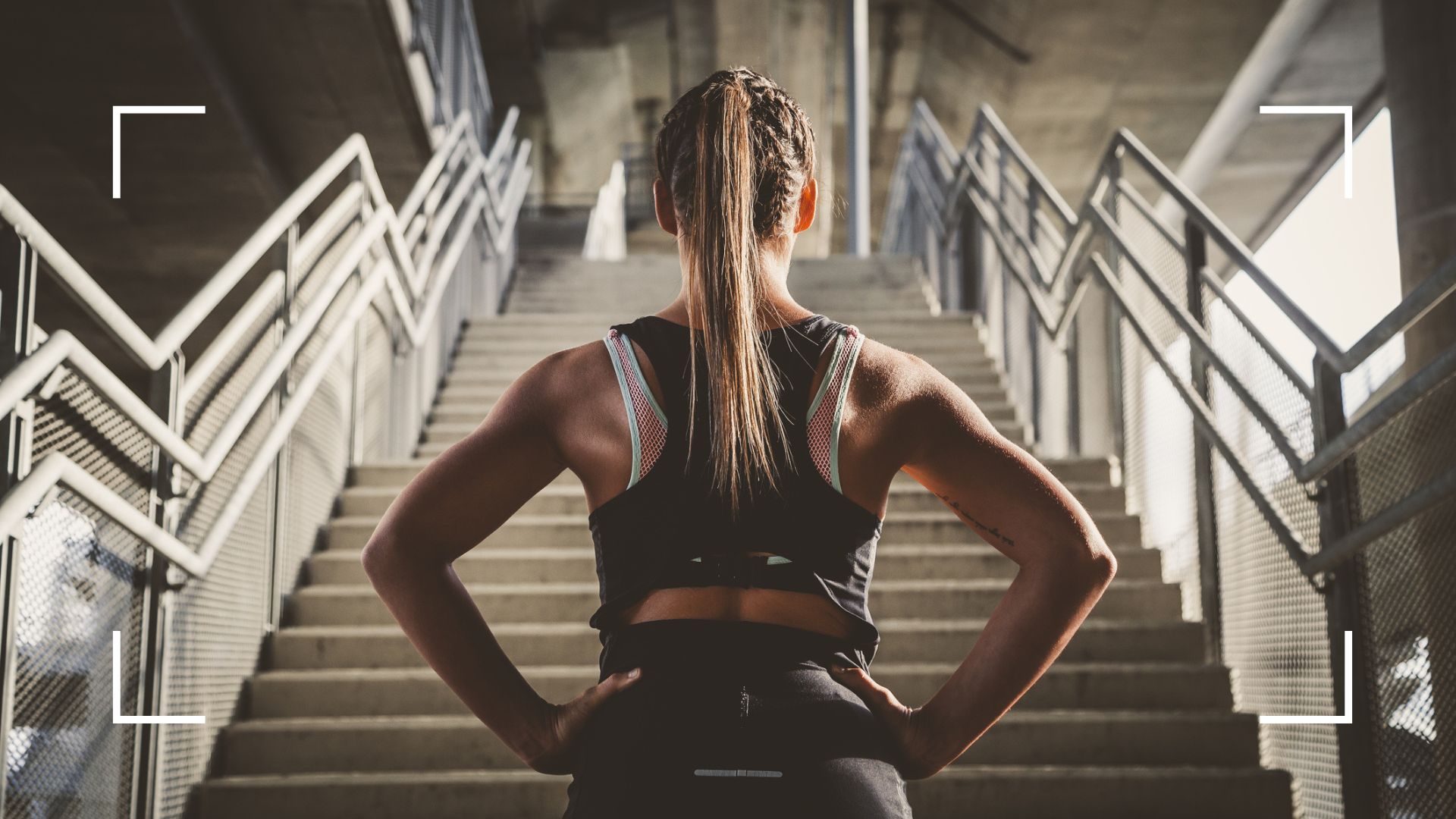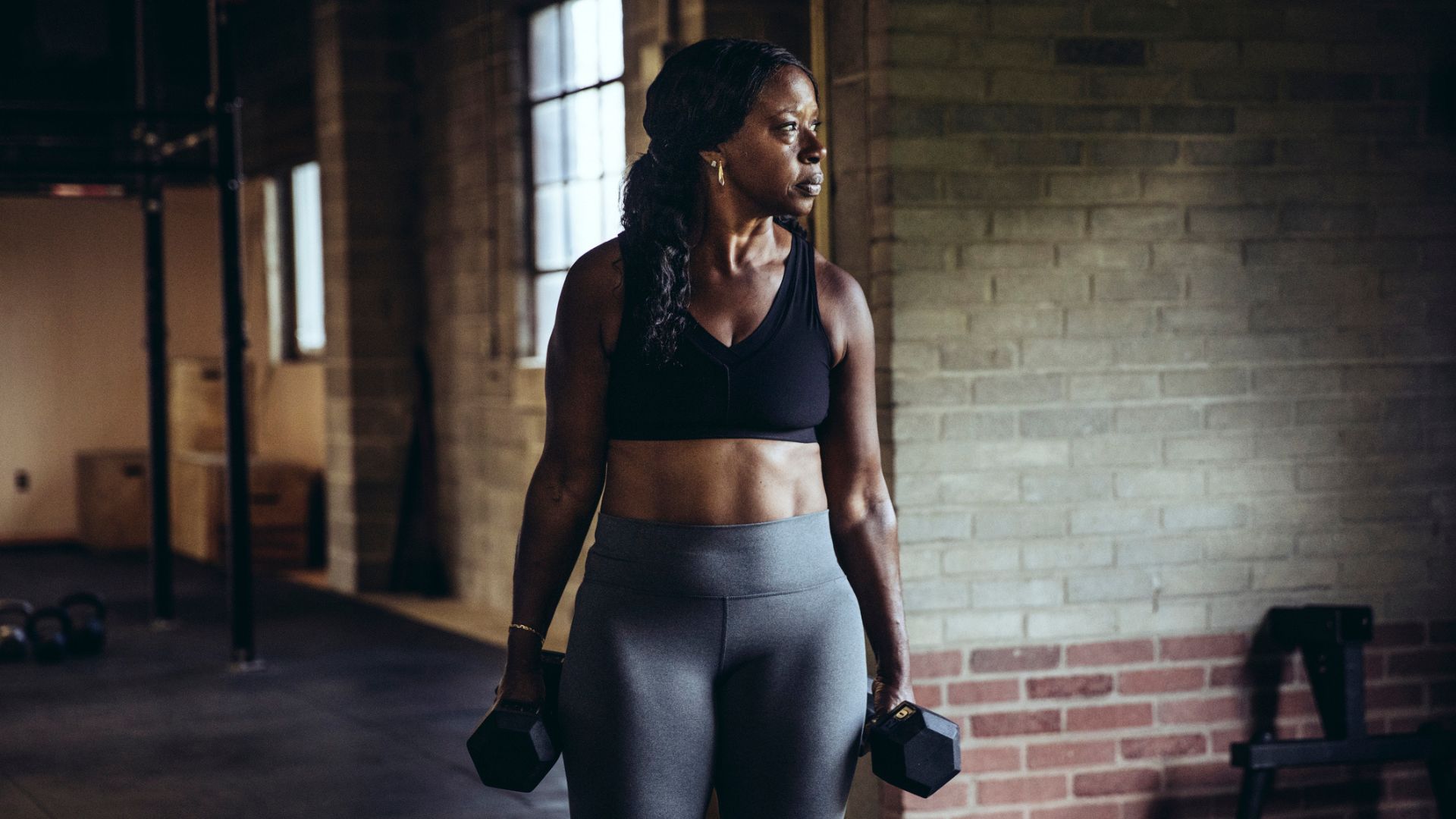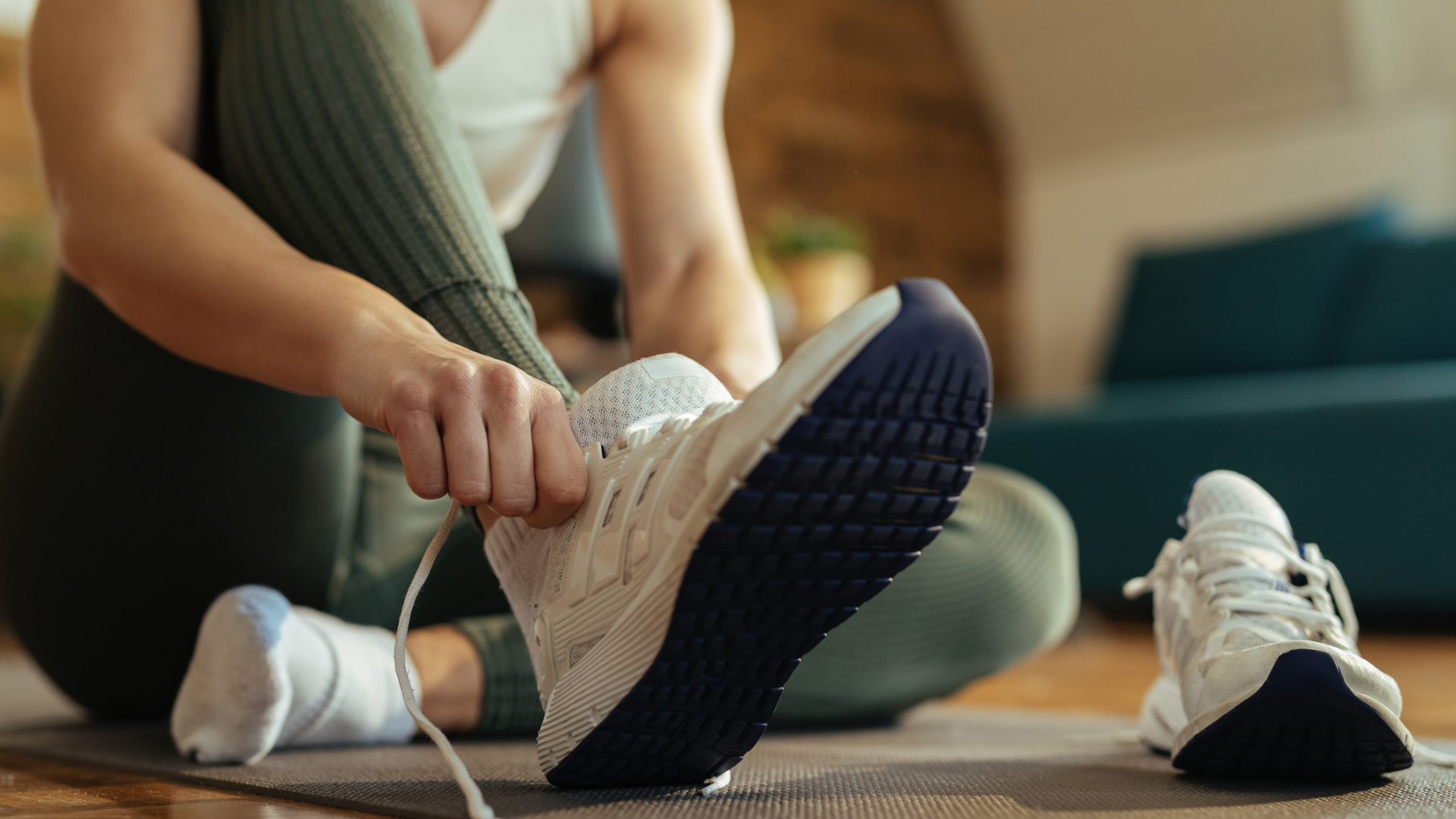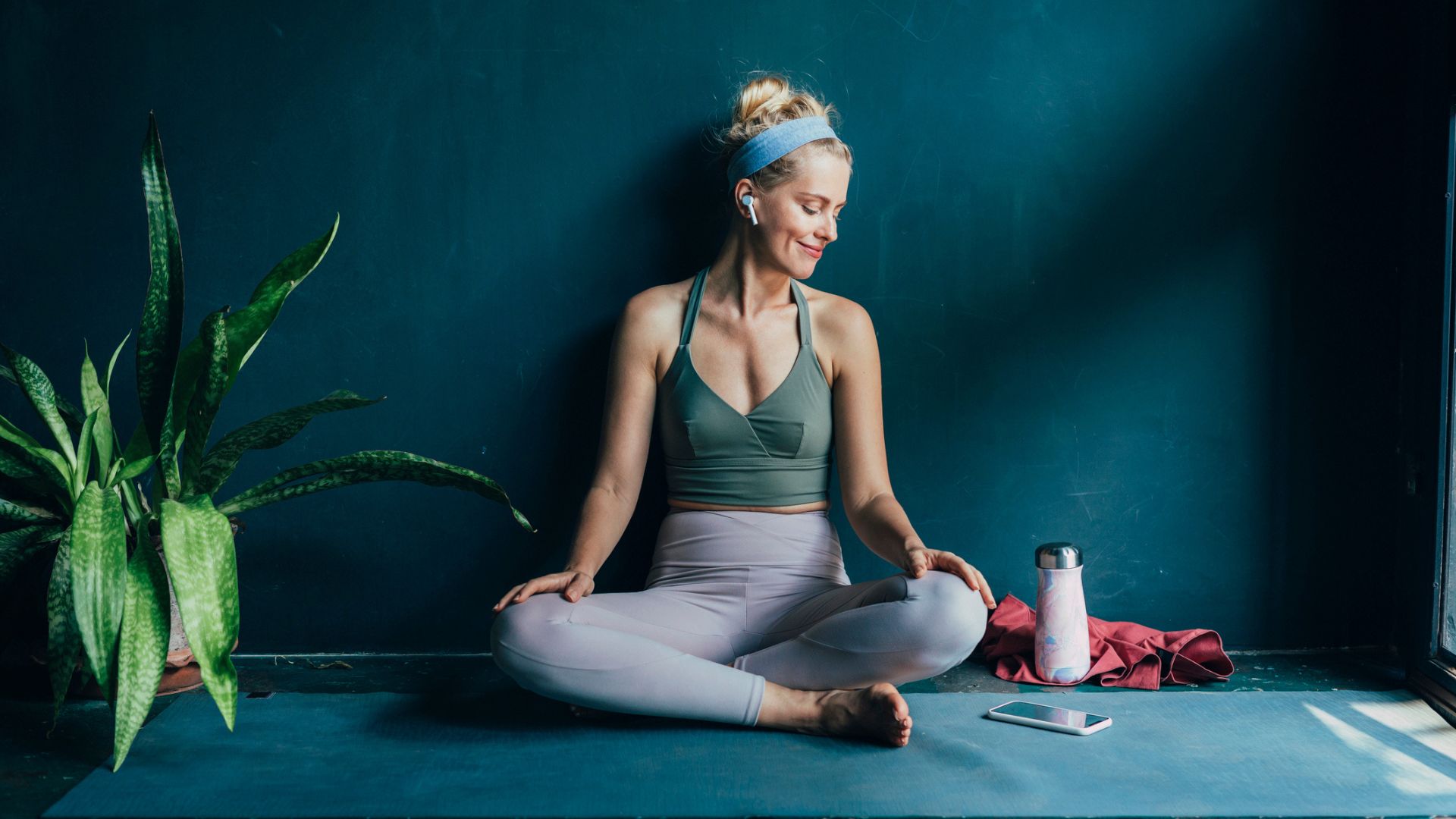Wondering how to get fit? Exercise your way to boosted energy levels and mental health with these easy steps
Learning how to get fit most effectively will benefit both your body and mind, whatever you age...


While learning how to get fit may be something that has long been sitting at the bottom of your to-do list, it is well worth your while to make it a priority. Upping your movement brings numerous benefits - from improved physical health to increased mental wellbeing. What's more, as we'll explain, it's particularly important for women in their 30s, 40s, 50s and beyond.
Happily dusted off your trainers, but not sure where to start when it comes to exercise? We'll take you step by step through all the best ways to gradually increase your activity levels in an effective and enjoyable way - including which types of workouts you should be looking out for and the at-home equipment you might need, as well how to make your sweat sessions more fun and the importance of getting enough rest.
What's more, we'll also tell you how to find out your current fitness levels - which, spoiler, are not all about the numbers - so that you can then monitor your progress for plenty of feel-good workout motivation. Because, while you might be turning to the likes of strength training to tone up, having the power to carry your own bags home from the supermarket or at the airport on the way to a sunny getaway will feel far more fulfilling. All that's left to do is to lace up your best running shoes...

Benefits of exercise
It’s never too late to reap the positives of fitness. "Movement is a really powerful tool to boost your mental and physical wellbeing,” says Nancy Best, personal trainer and founder of Ladies Who Crunch. “Studies have shown the value of a consistent exercise regime for promoting cardiovascular and muscular-skeletal health, as well as boosting endorphins - the chemicals in the brain that help elevate your mood - and lowering the stress hormones adrenaline and cortisol.”
Getting active can also help aid healthy, sustainable weight management if that is your goal. Fitness trainer Julia Buckley explains: "Exercise keeps our metabolism working well, so the energy we take in from food fuels our movement rather than being stored as fat." Other perks of physical activity include improved sex, thanks to increased blood flow and energy levels as well as boosted body confidence and self-esteem. Research from the University of Texas found women who spent 20 minutes on a treadmill or stationary bike increased blood flow to their pelvic area by 50%. The result? Stronger orgasms.
There is another vital upside. “It helps avoid too much sitting,” says Stuart Biddle, professor of physical activity and health at the University of Southern Queensland in Australia. “Our research showed that lying down, watching TV and sitting at the computer increased metabolic syndrome – a cluster of high blood pressure, high blood sugar and high cholesterol – by 73%.” Alanah Bray, a master personal trainer at Fitagain, agrees: “Our body is designed to move around - however many of us are in the jobs that encourage us to sit still. Taking breaks for physical activity can ward off many health conditions."
Exercise is important at any age, but particularly so for women as they get older. "Keeping fit can really improve your quality of life, from reducing injuries and niggles, to lifting your energy levels,” explains Best. “Those experiencing the perimenopause and menopause can benefit hugely from resistance training - with a study published in the journal Climacteric finding that those at this life stage who lifted weights recorded improved sleep and reduced menstrual symptoms. Additionally, it can also boost mental wellbeing and help maintain bone density.” Which is vital, since the latter naturally declines after the age of 30 - along with muscle mass - increasing the risk of osteoporosis and fractures.
Sign up for the woman&home newsletter
Sign up to our free daily email for the latest royal and entertainment news, interesting opinion, expert advice on styling and beauty trends, and no-nonsense guides to the health and wellness questions you want answered.
Your fitness age
When it comes to fitness, your starting point shouldn't matter - this is your own personal journey towards feeling better. However, it can sometimes be helpful to know where you began so that you can be propelled by your own progress.
“Sports scientists often look at how our fitness levels, or something called 'fitness age', affect our health,” says Buckley. “Fitter people tend to live longer and suffer fewer ailments associated with aging. So, a fitter person could be considered ‘younger’ than someone less fit of the same age. We can change our fitness age simply by improving our fitness.” If you're interested in taking this approach, it's possible to calculate both your biological age and metabolic age yourself. "For some people finding this out can serve as an excellent motivation and accountability tool," notes Bray.
However, Best cautions against getting too hung up on the numbers - be that online tests or even the best fitness trackers that can monitor things like calories burned, heart rate and blood pressure. "To guarantee accuracy and review your results with sufficient context, I recommend speaking to your doctor," she explains. "Then there's the fact that while trackers are brilliant at reminding you to move, they can also encourage negative behavioral patterns - like obsessively checking the data after a spin class."
A better option might be to consider how you feel as you move more. "I like to assess someone’s functional movement as a gauge of overall fitness," notes Best. "It’s about looking at whether you can carry a heavy bag, pick up a baby, maintain a conversation on a walk with a friend, and sit at your desk without lower back pain. This is about building a strong, healthy body that is fit for life.”
Talking of which, while you might find that stepping on the best body fat scales is useful, it is important to understand that it doesn't correlate with your fitness. “Firstly, as you build muscle mass, your number on the scales may increase,” adds Best. “Secondly, within a menstrual cycle, women will see a significant fluctuation in accordance with shifting hormone levels.”

How to get fit
First things first, every little helps when it comes to exercise. According to the current Physical Activity Guidelines for Americans, adults should each week be doing 150 minutes of moderate-intensity movement, including two days of muscle-strengthening workouts. However, whether this looks like getting off the bus early for work, a Pilates class, doing some gardening or lifting weights at the gym it is entirely up to you - as long as it gets your heart rate up.
Indeed, the best workout schedule is one you can actually stick to. “Fitness is often associated with intense cardio - and awful phrases like ‘no pain, no gain’ - but long-term health relies on a sustainable approach," points out Best. "That includes blending low impact, restorative movement with more dynamic exercise." To get you going, here are some expert tips on simple ways to improve your fitness (if you have a health issue or other concern, it is always crucial to consult a doctor first):
- Make easy lifestyle changes
- Add in variety
- Do interval training
- Use technology
- Have fun
- Build a home gym
- Don't forget to stretch
- Get out in nature
1. Easy lifestyle changes
“Start with the basics,” advises Best. “Often people get carried away with huge fitness goals, neglecting broader lifestyle habits, like getting consistent sleep and maintaining general activity levels with a solid step count. Ticking these boxes will build a solid foundation to increase your fitness.” Regarding the latter, here’s what you need to know about the traditional daily 10,000 steps target.
Indeed, small changes can make a big difference. "Taking the stairs instead of the elevator or using a basket when shopping instead of a trolley can all help increase non-exercise activity thermogenesis (NEAT)," says Bray, of the energy expended for everything we do that does not include sleeping, eating or exercise and which is hugely helpful for weight management. Additionally, a study by the Group Health Research Institute found that a brisk walk for 15 minutes three times a week reduced the likelihood of dementia by 38%.
2. Add in variety
"Keep it fresh," recommends Best. "To continue to see improvements in your fitness, switch up the stimulus. Build a varied training routine, with a mixture of low impact movement - like yoga and pilates - and resistance-based compound exercises, such as squats and deadlifts, to keep testing your body and drive results."
Similarly, Bray suggests doing strength training at least twice a week under the guidance of a personal trainer. "Exercise like brisk walking, jogging and swimming are all great ways to improve aerobic fitness," she adds, of activities that are accessible for most.
3. Do interval training
"HIIT - or high-intensity interval training - can be very useful," explains Bray. "Getting our heart rate to a maximum rate through short periods of high-intensity exercise is often a more effective way of building fitness than going for longer workouts at a lower intensity.
"Similarly, sprinting distances of a hundred to 400 meters with rests at the end, or giving your maximum effort on a bike for short periods - which can actually be applied to any form of fitness or sport - is the only way to develop our fast-twitch muscles so use it or lose it."
4. Use technology
This just doesn’t just mean the aforementioned fitness trackers logging your movement - but also the best workout apps to train at home, in the gym or at the park. “Couch to 5km is a brilliant free tool,” says Bray. “A lot of people hate running. This offers a progressive way to build up your fitness slowly - the appeal is that you don't need to run for 30 minutes, with just 10 minutes making a difference."
It may not seem a lot, but that it provides huge leaps for your health. Indeed, as well as improving circulation and metabolism, moderate cardio could lower the likelihood of heart disease and stroke by up to 27%. "It is also enough to reduce the risk of type 2 diabetes and obesity, reduce stress levels, blitz fat cells and preserve lean muscle mass, which keeps your metabolism healthy and your body toned," adds Bray. "Once achieved, it’s important to maintain the 5km runs. Being accountable to an app is an ideal way to gain motivation."

5. Have fun
“Find your tribe,” suggests Best. “Starting a new exercise routine can be lonely and if you don’t have a sense of accountability, it’s harder to stay consistent. Join a community - whether in person or online - so that you can support, rather than compete, with other people. Seeing other women, with similar values and lifestyles, committing to their training is much more motivational than trying to complete a program solo.”
In this same vein, it's important that whichever activity you choose it's one that you enjoy - whether Nordic walking or yoga for beginners. Perhaps you could even take it as an opportunity to try something new, like joining a dance class and learning how to salsa or simply using exercise as means to socialize by going for a walking coffee with a friend.
6. Build a home gym
You most certainly don't need equipment to workout - with your body weight often providing enough of a challenge at the beginning. What's more, there are often items around the house that you can enlist to train with. Use tins of beans as hand weights, a sturdy chair for bench presses and the stairs as a makeshift step machine.
However, if you want to push your body a bit further then it may be worth investing in some of the best dumbbells. "Light weights of 0.5kg to 5kg are a great start to working out at home and progressing beyond body weight," advises Bray. Short on space? The best resistance bands are an ideal option. Low on funds? You can often pick up second-hand equipment on The Freecycle Network and Gumtree.
7. Don't forget to stretch
“Prioritize mobility,” insists Best. “Our bodies need to be nurtured to avoid injuries - whether you’re embracing high impact training, or spending most of your day at a desk, completing a regular stretch sequence will help you protect your joints and release muscle tension.” Yoga and Pilates are great ways to benefit from this.
It's also important to pace yourself when it comes to your workout schedule - you don't need to train every day to boost fitness. "A worked muscle needs active rest - between two to three days - to recover and build, and working a worked muscle too soon leads to atrophy," warns Bray. "You can aid recovery further by the feeding the muscles with enough protein - which contains amino acids, the body's building blocks - in your diet."
8. Get out in nature
Thanks to Dutch motivational speaker Wim Hof, cold water swimming is all the rage - and for good reason too. It can ease stiff joints and help conditions such as fibromyalgia and arthritis. It is also ideal for those who have an injury or disability, notes Bray. To enjoy it safely, it's best to join a club or visit the World Open Water Swimming Association for more guidance.
Prefer to stay on dry land? "There are huge benefits to being in the great outdoors and getting back to nature," says Bray. "In addition to cold-water swims, long bike rides and hikes are not only good for aerobic training but they’re also fantastic for the mind." Indeed, researchers are already exploring the mental health benefits of forest bathing.

Lauren is a freelance writer and editor with a decade of print and digital journalism experience. While she specialises in covering health and wellness topics - ranging from nutrition and fitness, to women’s health conditions and mental wellbeing - she has written across a diverse range of lifestyle topics, including fashion, beauty, interiors and travel.
In addition to writing for Woman & Home and sister title Homes & Gardens, Lauren's work has also been published by Women’s Health, The Times, Daily Telegraph, Elle, Cosmopolitan, The Guardian, Marie Claire, Body + Soul, Stylist, Glamour, Grazia, Red, Dazed Digital, Yahoo Life, The Sun’s Fabulous, Get The Gloss and Hello! among others.
-
 Weekly horoscope: 2 astrologers' predictions for 14th - 20th April 2025
Weekly horoscope: 2 astrologers' predictions for 14th - 20th April 2025Read your weekly horoscope from Sally Trotman and Penny Thornton who reveal what this week holds for every star sign on love, family, career, and more
By Penny Thornton Published
-
 Need spring style inspiration? Jennifer Aniston proves a shirt dress is the most versatile item you can invest in
Need spring style inspiration? Jennifer Aniston proves a shirt dress is the most versatile item you can invest inIf you only buy one piece this weekend, make it a shirt dress
By Matilda Stanley Published